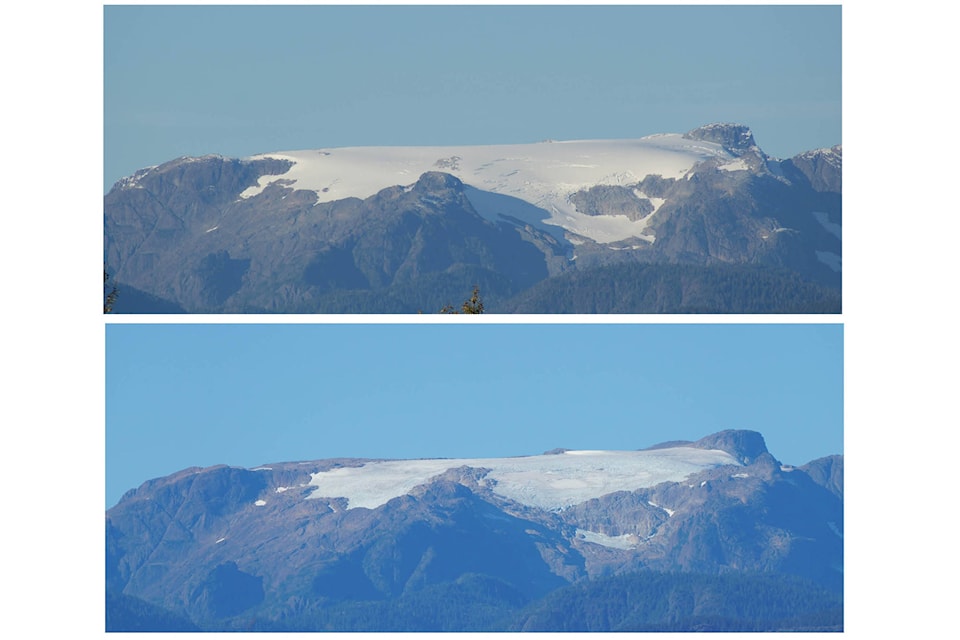Megan Tomlinson
Special to The Record
In the summer of 2019, Iceland held a funeral for Okjokull, the first glacier in the country to be lost to climate change. A memorial plaque was erected to address future generations and commemorate the significant loss. The plaque reads, “This monument is to acknowledge that we know what is happening and what needs to be done. Only you know if we did it.”
The elephant in the room for the Comox Valley community is a white whale, known as Queenesh by members of the K’omoks First Nation. The Comox Glacier has long been a beacon for Indigenous people of this land and is described as an important symbol of origin. The glacier is also a symbol of the greater Comox Valley community. It is predicted to be completely gone in 25 years due to human-caused climate change. The question we should ask is, how do we feel about this?
Climate grief is broadly accepted as a rational human response to the climate crisis and biodiversity loss. Climate psychology identifies climate grief and eco-anxiety as relatively new phenomena. Feelings such as anger, numbness, sadness, despair and disconnectedness emerge as a result of witnessing existing or future loss related to our habitat. Underlying anxiety and depression can become exacerbated, potentially leading to mood dysregulation, strained relationships and increase in substance use.
Populations directly impacted by climate change events and therefore more susceptible to adverse mental health outcomes include those with pre-existing chronic health conditions, Indigenous and racially marginalized people, children, older adults and those negatively impacted by socioeconomic status. The mental health of our community members is vitally important to the health of our community. The American Psychiatric Association underscores this connection and warns of increased interpersonal aggression, social instability, violence and crime as an impact of climate change.
Grief is a complex human emotion, often described as a process involving five stages: denial, anger, bargaining, depression and acceptance. When a loved one passes, ceremonies and rituals help to mark significance and provide space to be present with our feelings. The navigation through heartache can be eased with connection to community, loved ones and professionals. With support, resilience can emerge out of grief and new meaning can be discovered.
Climate grief has given rise to multiple manifestations of community action. There is now a Remembrance Day for Lost Species, calling on people to witness biodiversity loss and renew commitments to reduce human impact on the natural world. The grassroots initiative, Fridays for Future, saw young people from all over the world walk out of classrooms and into the streets with the aim of drawing attention to how youth feel about the climate crisis. In this community, the Comox Youth Climate Council arose from the weekly demonstration and continues to provide connection for our youth in the face of catastrophe. These displays of community grief turned into political action illustrate the capacity for solidarity and resilience to surface out of pain and sorrow.
Icelanders acknowledged how they were feeling about the ominous loss in their environment and collectively transformed grief into meaning and action. Climate grief does not have to paralyze — it can be the impetus for connection, creativity and action. When young people rise up and take to the streets, the forests and waterways, can we affirm their grief instead of condemning their actions? Do we have the courage to acknowledge our own feelings, build community cohesion and find a new way of being in the world? This is the work we must do to move from denial to acceptance and build a meaningful world for future generations.
Megan Tomlinson, R.N., is a member of the Comox Valley Nurses for Health & the Environment www.cvnhe.org, and a regular contributor to the Comox Valley Record


